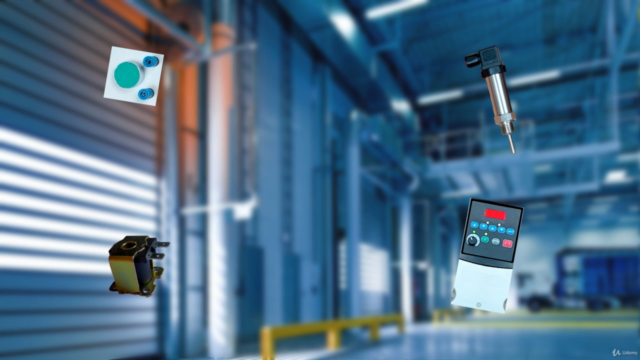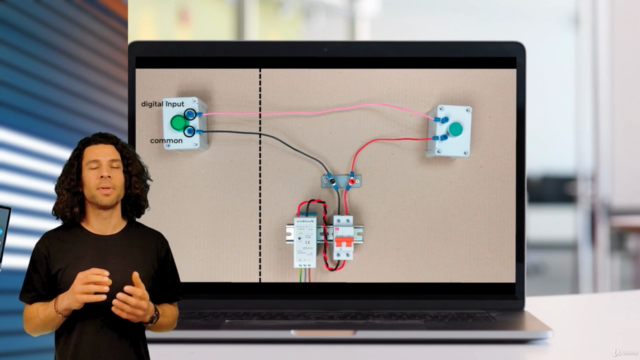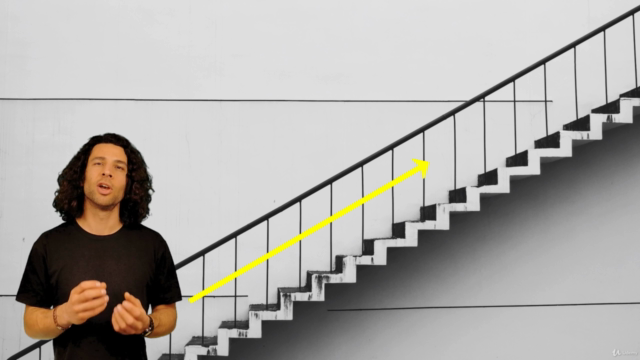Fundamentals of Electrical Instrumentation

Why take this course?
🚀 Course Title: Fundamentals of Electrical Instrumentation
🎉 Headline: Master the fundamentals of instrumentation: Learn to wire digital & analog circuits and understand how they work!
🔍 Course Description:
Discover the world of electrical instrumentation and become proficient in wiring digital and analog circuits with our comprehensive online course. Electrical instrumentation is a cornerstone of process control systems within buildings and factories, and mastering this skill set will open doors to various opportunities in the field of industrial automation and beyond.
In this course, you'll delve into the core concepts behind instrumentation devices, sensors, and circuits. You'll learn about their functions and how they are interconnected through electrical wiring to transmit data and control operations. With a focus on practical application, you'll gain hands-on experience with both digital and analog inputs/outputs, ensuring you can confidently tackle real-world wiring scenarios.
🎓 What You'll Learn:
-
Digital Inputs & Outputs: Understand the role of digital devices in instrumentation, including their connection to controllers through sink and source configurations. Demonstrations will cover connecting devices like push buttons, proximity sensors, and solenoid actuated water valves.
-
Analog Inputs: Explore the fundamentals of analog circuits, from basic principles to practical applications like 0-10volt and 4-20ma loops. Learn how to connect devices such as temperature sensors correctly.
-
Analog Outputs: Gain insights into how analog output devices function, including variable frequency drives that control motors and other machinery.
-
Real-World Applications: Study a controller in a real-world installation context, complete with various inputs and outputs connected for a comprehensive understanding of system integration.
📚 Course Structure & Activities:
-
Digital Inputs:
- Learn the purpose of digital input devices.
- Connect a push button and a proximity sensor to a controller in both sink and source configurations.
-
Digital Outputs:
- Understand how to connect an output device like a solenoid actuated water valve to a controller.
- Examine sink and source wiring configurations for digital outputs.
-
Analog Inputs:
- Dive into the basics of analog circuits with a focus on 0-10volt and 4-20ma circuits.
- Study different types of transmitters (2, 3, 4, and 5 wire) and learn to connect a temperature sensor in a loop.
-
Analog Outputs:
- Observe the effects of changing analog signals on devices such as variable frequency drives and connected machinery like motors.
-
Integration & Application:
- Analyze wiring diagrams of instrumentation and PLC circuits found online.
- Examine a controller within a real installation, with various inputs and outputs connected to it.
📝 Hands-On Learning:
This course is designed not just for theoretical understanding but also for practical application. You'll engage in exercises that will challenge you to apply what you've learned in a hands-on manner. Remember to keep your pen and paper handy, as there will be interactive tasks and questions that will test your knowledge and solidify your learning experience.
🎓 Join Us and Elevate Your Electrical Instrumentation Skills!
Ready to take the next step in your career? Enroll in this course today and unlock the potential of electrical instrumentation. Whether you're a beginner or looking to refine your skills, this course will provide you with the knowledge and confidence needed to excel in the field of industrial automation. 🤝
Let's embark on this electrifying journey together! Sign up now and transform your understanding of electrical instrumentation. ⚡
Course Gallery




Loading charts...